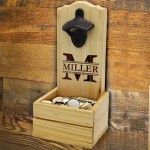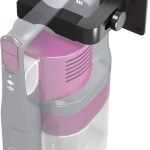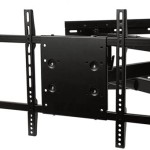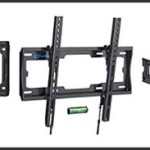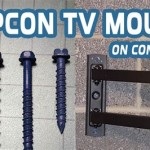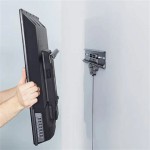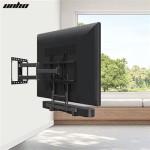Wall Mounted Hot Water Radiators: A Comprehensive Overview
Wall-mounted hot water radiators represent a long-standing and widely adopted method for heating residential and commercial spaces. Their enduring popularity stems from a combination of efficiency, reliability, and adaptability to various architectural styles. This article provides a detailed examination of wall-mounted hot water radiators, covering their operation, benefits, installation considerations, maintenance requirements, and common types.
The core principle of a hot water radiator is the transfer of thermal energy from heated water to the surrounding environment. A central boiler heats water, which is then circulated through a network of pipes to individual radiators located throughout the building. The radiators, typically constructed from cast iron, steel, or aluminum, are designed with a large surface area to maximize heat dissipation. As the hot water flows through the radiator, it loses heat, warming the surrounding air. The cooled water then returns to the boiler for reheating, completing the cycle. This continuous circulation ensures a consistent and comfortable temperature throughout the heated space.
While designs may vary, the fundamental components remain consistent. These include the radiator panels or fins, which provide the surface area for heat transfer; the inlet and outlet valves, which control the flow of hot water; and the mounting brackets, which secure the radiator to the wall. Thermostatic radiator valves (TRVs) are often incorporated to allow individual control of the temperature in each room, enhancing energy efficiency and user comfort. The choice of materials, size, and style of the radiator depends on factors such as the heating load of the room, the available wall space, and aesthetic preferences.
Key Benefits of Wall Mounted Hot Water Radiators
Wall-mounted hot water radiators offer several distinct advantages compared to other heating systems, contributing to their continued prevalence in many buildings.
Energy Efficiency: Hot water radiators, particularly when coupled with modern condensing boilers, can achieve high levels of energy efficiency. Water has a high specific heat capacity, meaning it can transport a significant amount of thermal energy with relatively little temperature change. This results in lower energy consumption compared to forced-air systems, which rely on heating air, a less efficient medium. Furthermore, the ability to zone heating with TRVs allows for precise temperature control in different areas, preventing energy waste in unoccupied rooms. The gradual and consistent heat provided by radiators also contributes to a more stable and comfortable indoor environment, reducing the need for frequent temperature adjustments.
Quiet Operation: Unlike forced-air systems, which generate noise from the fan and ductwork, hot water radiators operate virtually silently. The absence of moving parts within the radiator itself ensures a peaceful and undisturbed environment. This is a significant advantage in bedrooms, libraries, and other areas where quiet is essential. The only potential source of noise is the occasional gurgling or hissing sound caused by air trapped in the system, which can be easily addressed through proper bleeding procedures. The silent operation contributes to a higher quality of life and enhances overall comfort within the heated space.
Consistent Heat Delivery: Radiators provide a radiant form of heat, which warms objects and surfaces in the room directly, rather than just heating the air. This results in a more even and consistent temperature distribution throughout the space. Unlike forced-air systems, which can create hot and cold spots, radiators provide a more uniform and comfortable heating experience. The radiant heat also helps to maintain a higher level of humidity in the air, preventing the dryness often associated with forced-air heating. This is particularly beneficial for individuals with respiratory sensitivities.
Durability and Longevity: Radiators are typically constructed from robust materials such as cast iron or steel, ensuring exceptional durability and a long lifespan. With proper maintenance, a radiator can last for several decades, providing reliable heating performance with minimal upkeep. The simple design and lack of complex moving parts contribute to their longevity. The resistance to corrosion and wear and tear further enhances their lifespan. This makes them a cost-effective heating solution over the long term.
Installation Considerations for Wall Mounted Radiators
The proper installation of wall-mounted hot water radiators is crucial for ensuring optimal performance and safety. Careful planning and adherence to established guidelines are essential throughout the installation process.
Location Selection: The placement of radiators should be carefully considered to maximize their heating effectiveness and minimize potential obstructions. Radiators are typically installed under windows or along exterior walls, where heat loss is greatest. This helps to counteract drafts and maintain a comfortable temperature near the exterior surfaces. It is important to ensure that the radiator is not obstructed by furniture or curtains, as this can impede airflow and reduce its heating efficiency. The location should also be accessible for maintenance and repairs.
Wall Mounting: Properly securing the radiator to the wall is essential for safety and stability. The wall must be structurally sound and capable of supporting the weight of the radiator when filled with water. Appropriate mounting brackets should be used, and they should be securely anchored to the wall studs or framing. The brackets should be level and properly spaced to ensure that the radiator is evenly supported. In some cases, reinforcement of the wall may be necessary to provide adequate support. Improper mounting can lead to the radiator detaching from the wall, posing a safety hazard and potentially causing water damage.
Piping Connections: The connection of the radiator to the hot water supply and return pipes must be done correctly to ensure proper water flow and prevent leaks. The piping should be sized appropriately to handle the flow rate required by the radiator. All connections should be made using appropriate fittings and sealant to prevent leaks. The piping should be properly insulated to minimize heat loss and improve energy efficiency. It is important to follow local plumbing codes and regulations when making these connections. A professional plumber should be consulted if there is any uncertainty about the proper installation procedures.
Bleeding Air: After installation, it is crucial to bleed any air from the radiator to ensure proper operation. Air trapped in the radiator can impede water flow and reduce its heating efficiency. A radiator bleed valve is typically located at the top of the radiator for this purpose. The valve should be opened slowly while holding a container to catch any water that escapes. The valve should be closed once all the air has been bled and only water is flowing out. This process may need to be repeated periodically to remove any air that accumulates in the system.
Types of Wall Mounted Hot Water Radiators
Wall-mounted hot water radiators are available in various types, each with its own characteristics and suitability for different applications. The selection of the appropriate type depends on factors such as the desired aesthetic, the heating load of the room, and budgetary constraints.
Cast Iron Radiators: Cast iron radiators are the traditional type of radiator and are known for their durability, heat retention, and classic aesthetic. They are typically heavier and more expensive than other types of radiators, but they offer superior heat retention, providing a more consistent and comfortable heating experience. Cast iron radiators are also known for their long lifespan. They are often found in older buildings and are valued for their historical charm. Modern cast iron radiators are available in a variety of styles and finishes to suit different architectural styles.
Steel Panel Radiators: Steel panel radiators are a more modern and cost-effective alternative to cast iron radiators. They are lighter and easier to install and offer good heating performance. Steel panel radiators are available in a wide range of sizes and styles to suit different heating requirements and aesthetic preferences. They are typically less expensive than cast iron radiators but may not offer the same level of heat retention. Steel panel radiators are a popular choice for new construction and renovation projects.
Aluminum Radiators: Aluminum radiators are the lightest and most energy-efficient type of radiator. They heat up and cool down quickly, making them ideal for use with modern heating control systems. Aluminum radiators are also resistant to corrosion, making them a good choice for areas with hard water. They are typically more expensive than steel panel radiators but offer superior energy efficiency and faster response times. Aluminum radiators are available in a variety of modern designs and finishes.
Column Radiators: Column radiators are a type of cast iron or steel radiator that features a series of vertical columns. They offer a distinctive and traditional aesthetic and are often found in older buildings. Column radiators provide good heating performance and are available in a variety of sizes and styles. They are typically heavier and more expensive than panel radiators but offer a unique and stylish heating solution.
Towel Rail Radiators: Towel rail radiators are specifically designed for bathrooms and are used to both heat the room and dry towels. They are typically made from steel or stainless steel and are available in a variety of sizes and styles. Towel rail radiators provide a convenient and efficient way to keep towels warm and dry while also providing supplemental heating to the bathroom. They are a popular choice for modern bathrooms.
Understanding the various types of wall-mounted hot water radiators and their respective advantages and disadvantages is crucial for making an informed decision when selecting a heating system for a particular space. Careful consideration of the heating load, aesthetic preferences, and budgetary constraints will help to ensure that the chosen radiator type meets the specific needs of the application.

Pensotti 20 In H X 16 L Hot Water Panel Radiator Package White

Wall Mounted Aluminum Radiator Heater 10 Sections For Room Heating Hot Water System

Keira Hot Water Wall Mounted Steel Decorative Radiator By Cordivari

Cast Iron Radiators For Homes Wall Mounted Aluminum Radiator Heater With 10 Panels Hot Water Solar
Beaconmorris Beacon Morris Convector Residential

Modern Wall Mount Radiator Heater Hot Water Heating 10 Panel Aluminum 5500 Btu

Modern Wall Mount Radiator Heater Hot Water Heating 6 Panel Aluminum 3500 Btu

Hot Spring Water Wall Mounted Steel Decorative Radiator By Hotwave

Hot Water Radiator Blower Ad Hoc Contemporary Aluminum Wall Mounted

Sand Wall Mounted Hot Water Steel Decorative Radiator By Scirocco H


